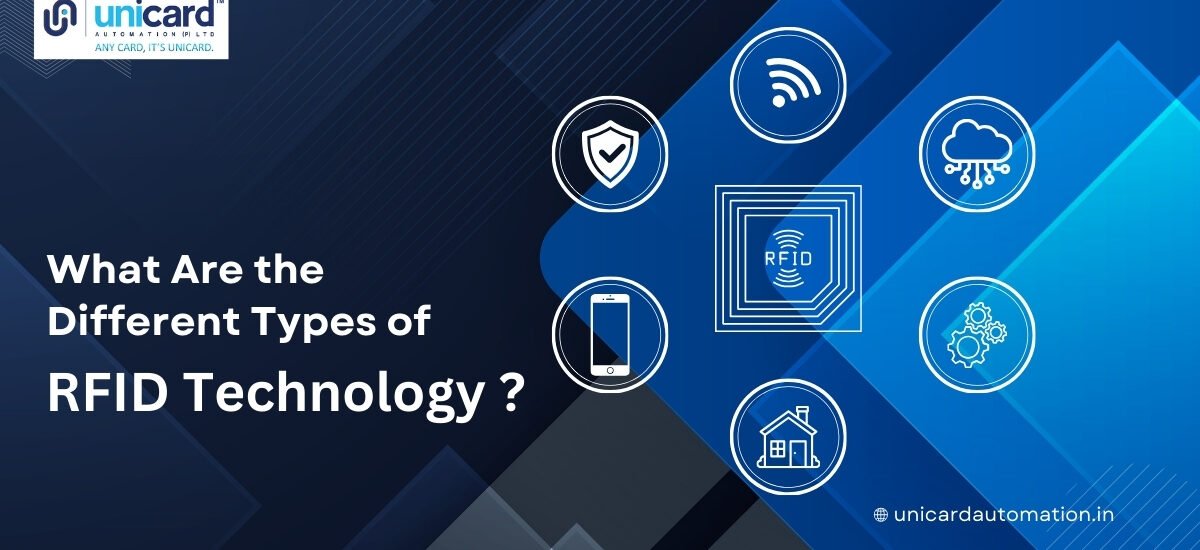Frequency-Based Classification
1.This is the heading
LF RFID systems operate between 30 kHz and 300 kHz and have a short read range of up to 10 centimeters. They are highly resistant to interference from metals and liquids, making them ideal for applications such as livestock tracking, access control, and certain types of ID card systems. Despite their limited data read rate, LF RFID remains reliable for low-speed, close-range identification tasks. ID card manufacturers often utilize LF RFID technology in applications requiring secure, proximity-based access.
2. High-Frequency (HF) RFID
HF RFID operates within the 3 MHz to 30 MHz range, offering read distances between 10 centimeters and 1 meter. This frequency is commonly used in electronic ticketing, payment systems, and data transfer applications. Near Field Communication (NFC), widely employed in contactless payment cards and hotel key cards, is a subset of HF RFID. HF RFID’s balance of range and performance makes it suitable for environments where precision and security are essential, including use cases by professional ID card manufacturers.
3. Ultra-High Frequency (UHF) RFID
Operating between 300 MHz and 3 GHz, UHF RFID provides read ranges of up to 12 meters and supports faster data transfer rates compared to LF and HF systems. While UHF is more susceptible to interference from metals and liquids, advancements in tag and antenna designs have addressed many of these challenges. UHF RFID is widely used in retail inventory tracking, pharmaceutical anti-counterfeiting, and large-scale asset management. It also supports ID card manufacturers in creating advanced identification systems for high-volume applications.
Power Source-Based Classification
1. Active RFID Tags
Active RFID tags are equipped with an internal power source, such as a battery, enabling them to transmit signals over long distances, often exceeding 100 meters. These tags are ideal for real-time asset tracking, vehicle monitoring, and large-scale industrial applications. Their ability to transmit data continuously makes them valuable for environments where constant updates are required.
2. Passive RFID Tags
Passive RFID tags lack an internal power source and rely on energy from the RFID reader’s signal to transmit data. Although their read range is shorter compared to active tags, they are more cost-effective and widely used in applications such as inventory management, retail, and access control. Passive RFID technology is also frequently integrated into ID card systems, providing a practical solution for secure and affordable identification.
3. Semi-Passive (Battery-Assisted Passive) RFID Tags
Semi-passive RFID tags include an internal battery that powers the tag’s internal circuitry but not the communication with the reader. This design extends the read range and enhances reliability compared to standard passive tags. Semi-passive tags are commonly used in environmental monitoring applications, such as tracking temperature and humidity, and are an excellent choice for specialized ID card solutions requiring enhanced functionality.
Selecting the Right RFID Technology
Conclusion
RFID technology offers a diverse range of solutions to meet the unique demands of various
industries. By understanding the distinct characteristics of each type of RFID system,
organizations can implement technologies that align with their operational goals. Whether for
inventory management, real-time tracking, or secure identification, RFID systems provide
unparalleled efficiency and reliability. Partnering with professional ID card manufacturers can
further enhance the integration of RFID technology into customized solutions, ensuring optimal
performance and security for any application.





